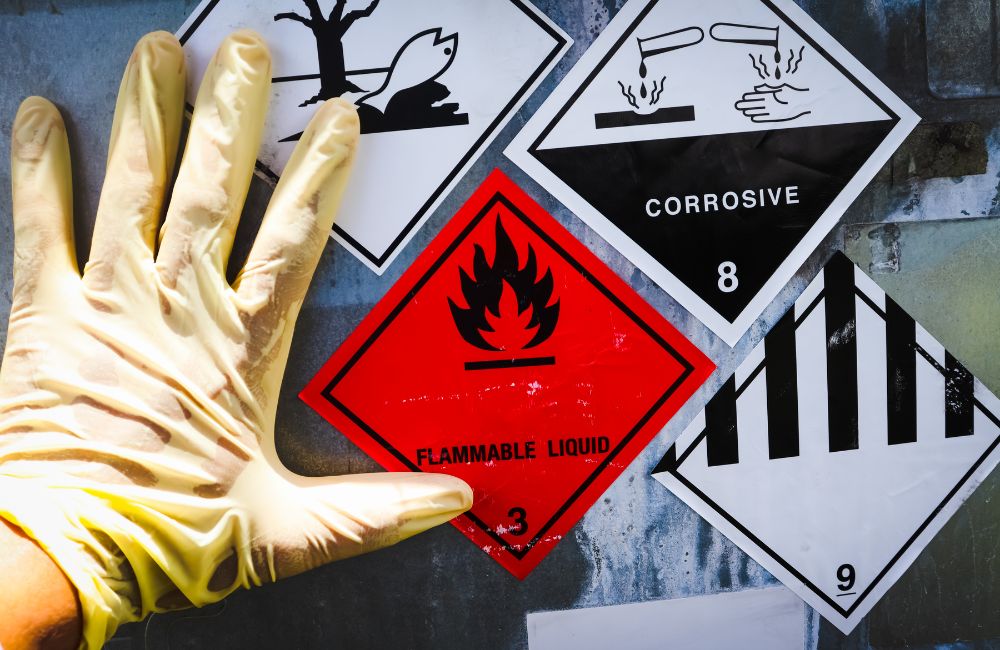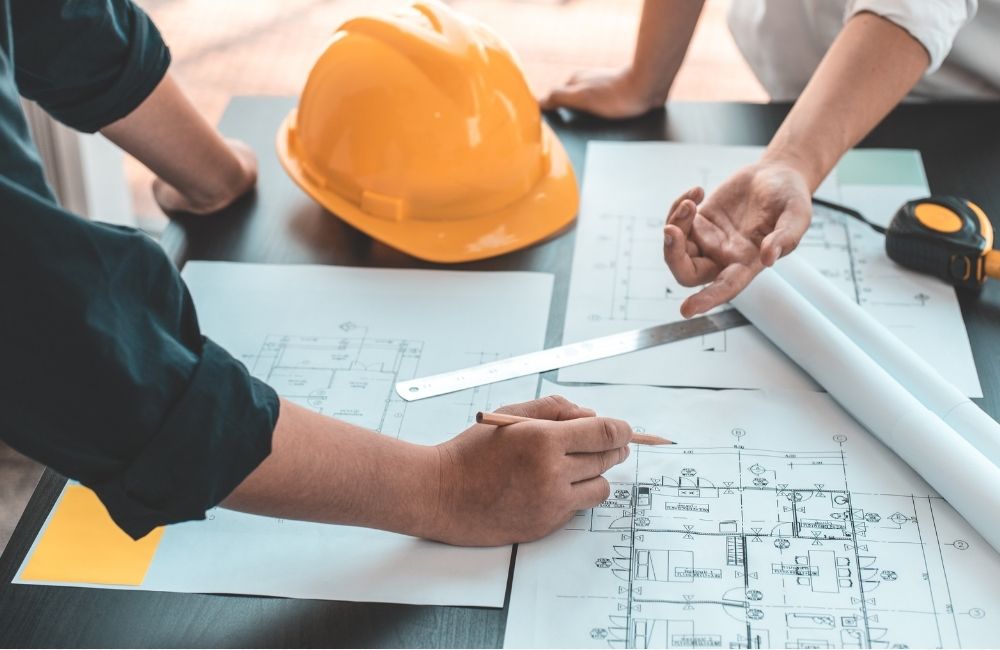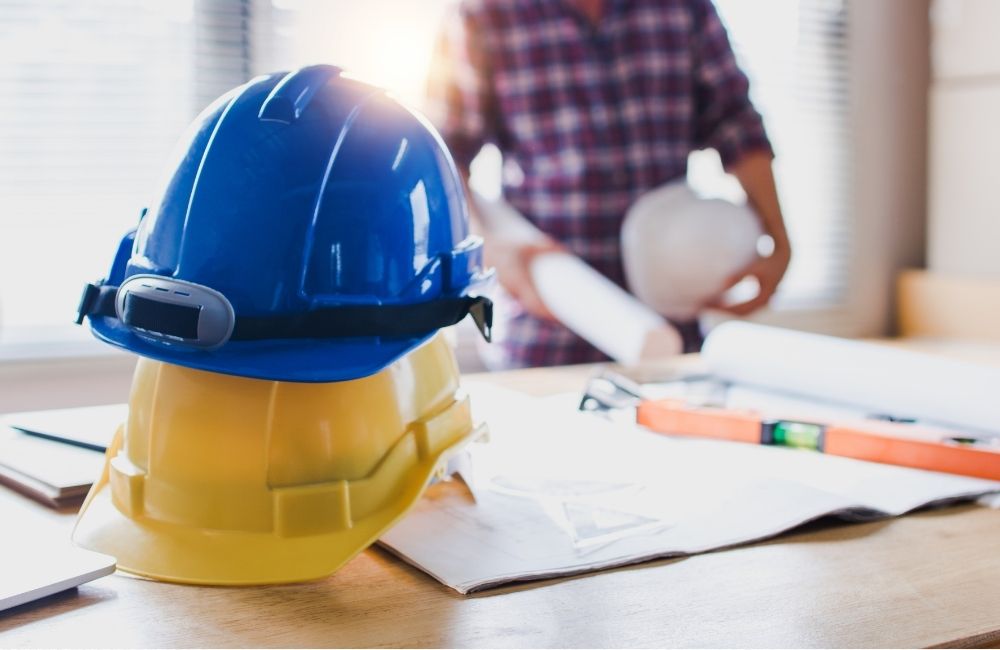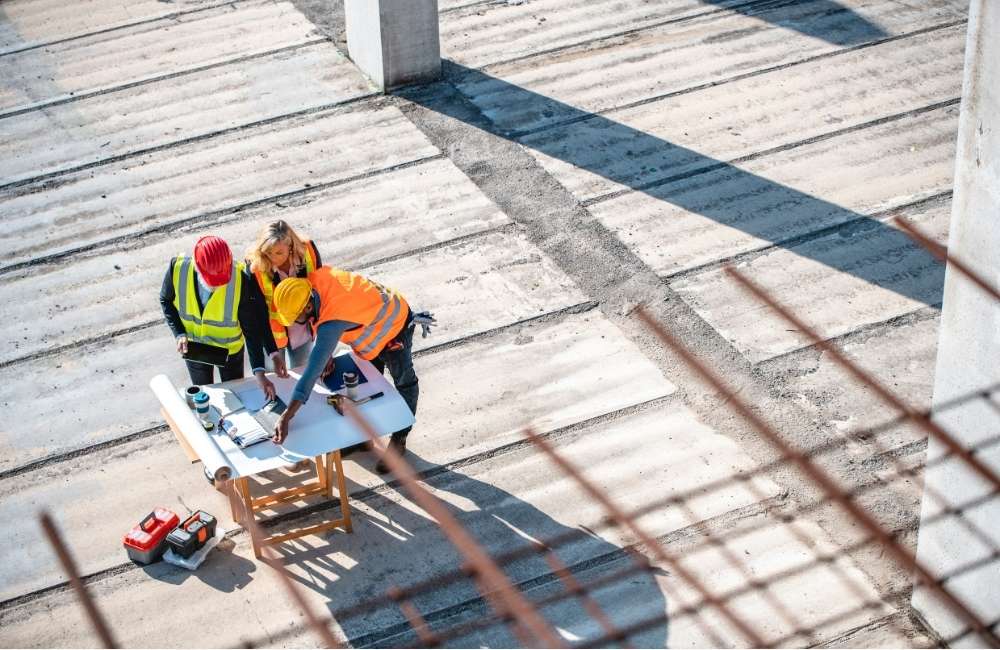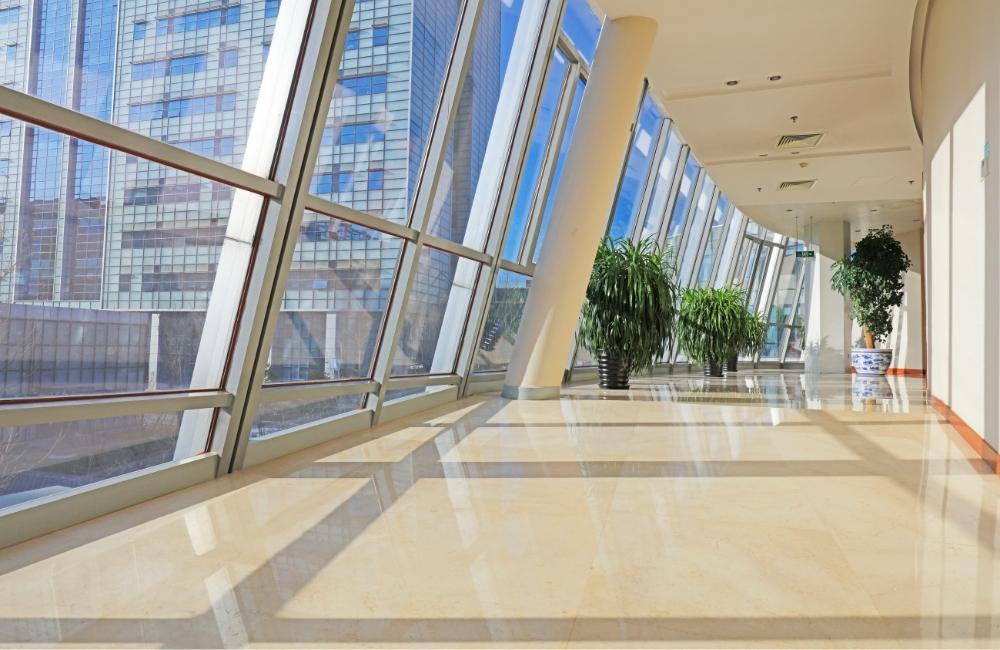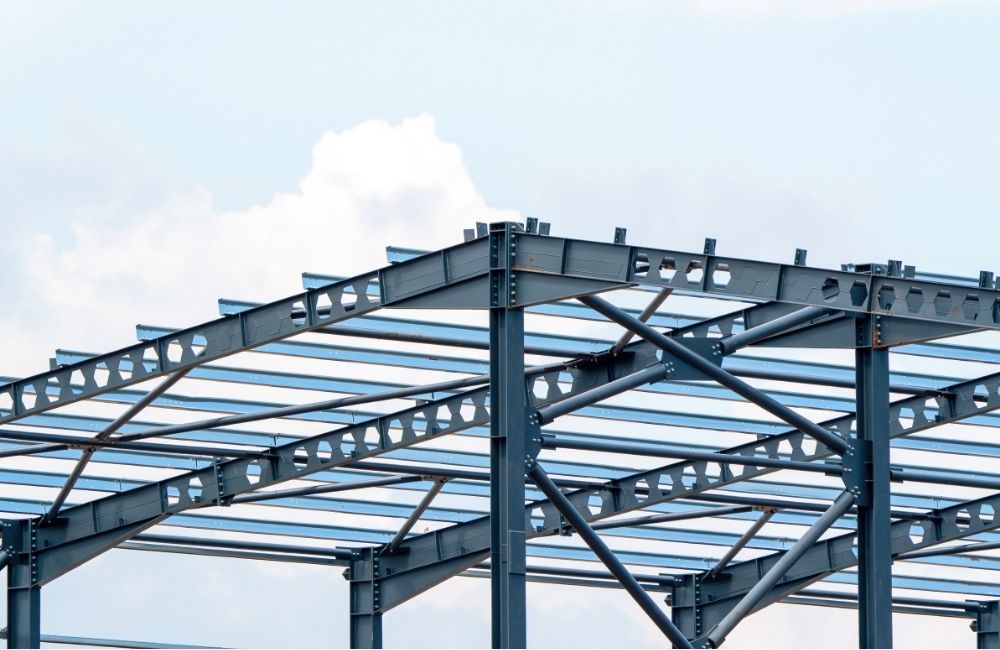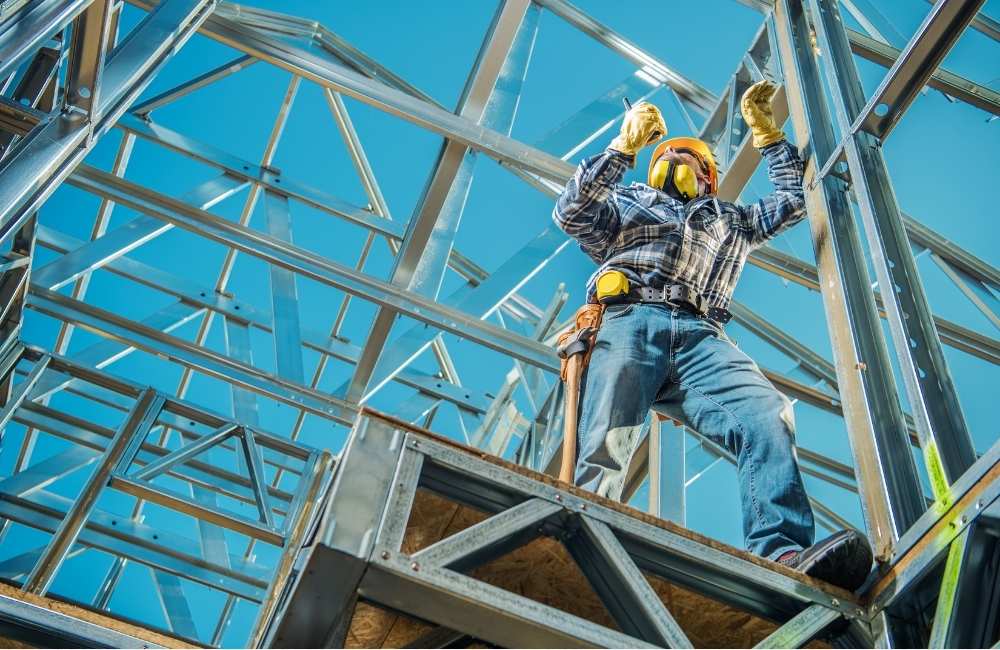Construction remains one of the most dangerous industries, and safety on the worksite is most important. The alarming statistic of 1,008 annual fatal injuries in construction underscores the critical need for stringent safety measures. Understanding and addressing common risks on construction sites can significantly reduce the incidence of accidents and fatalities, ensuring better safety in construction practices across the industry.
8 Common Risks to Beware of on Construction Sites
Ensuring safety in construction is essential due to the numerous hazards on job sites. To help protect workers and prevent accidents, it's important to be aware of the most common risks. Here are eight significant dangers that every construction site should address.
1. Hand and Arm Vibration Hazards
Hand-arm Vibration Syndrome (HAVS) is a significant health risk in the construction industry, often overlooked despite its serious consequences. Prolonged exposure to vibrating tools and machinery can lead to this debilitating condition, making safety in construction paramount.
Causes of Hand-arm Vibration Syndrome
Hand-arm Vibration Syndrome is caused by repeated and prolonged exposure to hand-held vibrating tools and equipment. Common tools that can lead to HAVS include:
- Power Drills
- Jackhammers
- Chainsaws
- Grinders
Symptoms of Hand-arm Vibration Syndrome
Recognizing the symptoms of HAVS early is crucial for preventing long-term damage. Key symptoms include:
- Tingling and Numbness: Often in the fingers, which may become permanent.
- Loss of Grip Strength: Difficulty holding or manipulating objects.
- Blanching (Whitening) of Fingers: Especially in cold weather, also known as "Vibration White Finger."
- Pain and Discomfort: The hands and arms can be severe and disabling.
Prevention Techniques
Preventing hand-arm vibration syndrome involves several proactive measures that can be implemented to ensure construction safety. One of the most effective ways to prevent HAVS is to minimize exposure to vibrating tools. Strategies include:
- Opt for tools designed to produce less vibration.
- Ensure tools are well-maintained to reduce excessive vibration.
- Use Anti-vibration Gloves as they can help absorb some of the vibrations.
2. Occupational Noise Exposure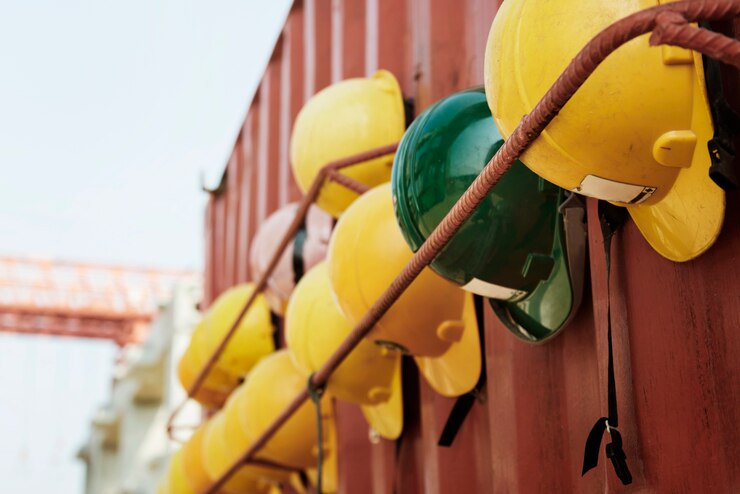
Noise exposure is a significant concern in the construction industry due to the high levels of sound produced by machinery, tools, and construction activities. Alarmingly, 56% of construction workers experience hearing impairment by the time they reach retirement age. Understanding the impact of noise on health and implementing methods to reduce noise levels is crucial for ensuring safety in construction.
Impact on Health
Exposure to high noise levels is a significant concern for safety in construction. Here are some key health impacts of noise exposure:
- Hearing Loss: Permanent hearing damage from prolonged noise exposure.
- Stress and Fatigue: Increased stress and fatigue lead to decreased productivity and higher accident risk.
- Communication Difficulties: High noise levels can make it challenging for workers to communicate effectively, leading to misunderstandings and mistakes.
- Cardiovascular Issues: Long-term noise exposure has been linked to cardiovascular problems such as high blood pressure and heart disease. Ensuring safety in construction involves addressing these potential health risks.
Methods to Reduce Noise Levels
Reducing noise levels is crucial for maintaining safety in construction. Here are some key strategies to reduce noise levels:
- Install sound-absorbing barriers and enclosures around noisy equipment.
- Plan noisy activities with fewer workers and rotate workers to limit noise exposure.
- To ensure safety in construction, provide earplugs or earmuffs and educate workers on their proper use.
- Regularly monitor noise levels and post signs indicating high noise areas requiring hearing protection.
3. Electrical Exposure Risks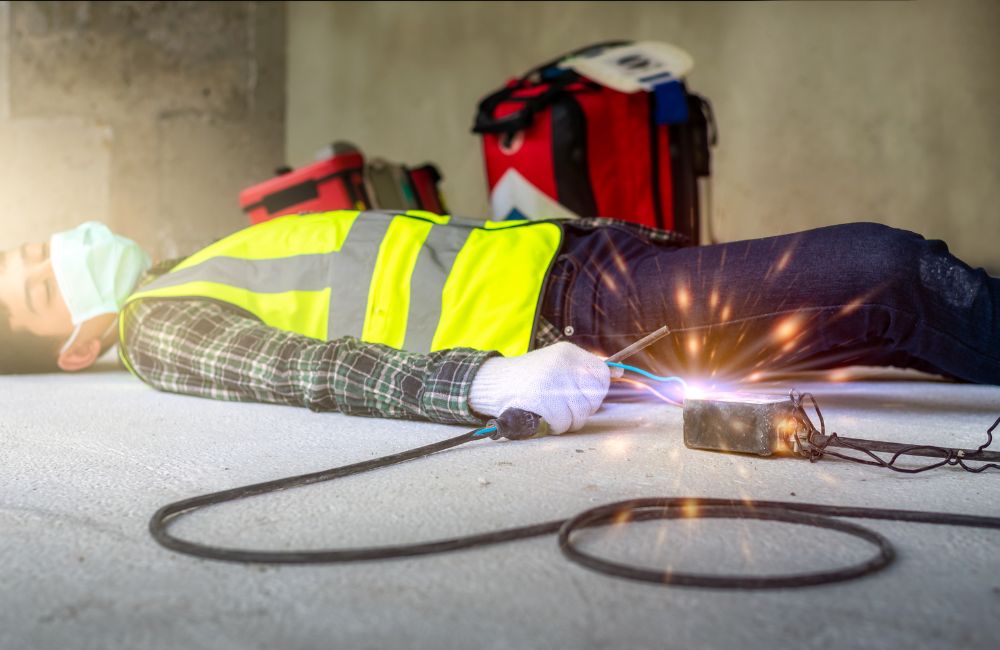
Ensuring safety in construction requires recognizing and addressing electrical exposure risks. Here’s how to identify and manage these hazards effectively.
Identifying Electrical Hazards
Understanding the common electrical hazards on construction sites is crucial for maintaining a safe work environment. Here are the key hazards to watch for to ensure safety in construction:
- Live Wires: Exposed or damaged wires can cause electric shocks.
- Faulty Equipment: Malfunctioning tools and machinery may lead to electrical fires.
- Wet Conditions: Working in damp environments increases the risk of electrocution.
Safety Measures for Electrical Work
Safety measures are essential to mitigate electrical risks and protect workers on construction sites. Follow these guidelines to enhance safety in construction:
- Use properly insulated tools to prevent electric shocks.
- Ensure power sources are turned off and tagged before starting maintenance.
- Wear rubber gloves, boots, and other appropriate PPE to protect against electrical hazards.
4. Trench Collapse Dangers
Trench collapses are a significant risk in construction, leading to severe injuries or fatalities. Ensuring safety in construction requires strict adherence to safety protocols.
Safety Guidelines for Trench Work
Implementing effective safety in construction practices is crucial to prevent trench collapses. Here are some essential measures to ensure worker safety:
- Shoring and Shielding: Essential trench support systems that prevent collapses in trench work.
- Regular Inspections: Inspect trenches daily and after any event that could affect their stability in construction.
- Emergency Preparedness: Have a rescue plan and train workers on emergency procedures related to trench work.
5. Elevated Work Risks
Working at heights is one of the most dangerous tasks in the construction industry. The risks associated with elevated work can lead to severe injuries or even fatalities if not correctly managed. This aspect of safety in construction requires meticulous planning and adherence to stringent safety protocols.
Here are some common risks of working at heights:
- Workers can lose their balance or footing.
- Equipment failure can result in a fall.
- Tools or materials falling from height can injure those below.
- Poorly secured items can quickly become hazards.
Safety Measures for Elevated Work
Ensuring safety in construction, especially when working at heights, involves implementing comprehensive safety measures. These measures not only protect workers but also enhance overall site safety.
- Conduct risk assessments before starting work at heights.
- Develop a plan with emergency procedures.
- Ensure workers wear appropriate PPE: helmets, harnesses, and non-slip footwear.
- Regularly inspect PPE for damage.
- Train workers on safe equipment use and working at heights.
- To ensure safety in construction, use stable and secure scaffolding, ladders, and platforms.
- Install guardrails, toe boards, and other fall protection systems.
- Regularly inspect equipment and working surfaces for safety compliance.
6. Construction Site Dust Risks
Dust is a prevalent hazard in construction environments, and addressing it is crucial for ensuring safety in construction.
Health Issues Caused by Dust Exposure
Construction dust contains a variety of harmful particles, including silica, asbestos, and wood dust. Prolonged exposure to these particles can lead to severe respiratory conditions. Some of the key health issues include:
- Silicosis: A lung disease caused by inhaling crystalline silica dust.
- Asbestosis: A chronic lung condition resulting from asbestos fiber inhalation.
- Chronic Obstructive Pulmonary Disease (COPD): A group of diseases that cause airflow blockage and breathing problems.
- Asthma: Construction dust can trigger or worsen asthma symptoms.
Effective Dust Management Techniques
To maintain safety in construction, it is essential to implement effective dust control measures. Here are some strategies to manage dust on construction sites:
- Spray water on dusty areas regularly.
- Use water misters or hoses during demolition and cutting.
- Install local exhaust ventilation (LEV) to capture and remove dust.
- Provide workers with N95 masks or respirators.
- Use barriers and enclosures to isolate dusty activities.
- Seal off specific zones to prevent dust from spreading.
- Regularly clean and maintain the work site.
- Use vacuum systems with HEPA filters for dust removal instead of sweeping.
7. Equipment Movement Hazards

Mitigating equipment movement hazards is crucial for safety in construction. Construction sites are bustling with machinery and equipment, making safety measures vital to prevent accidents.
- Vehicle and Machinery Collisions: Heavy machinery poses significant collision risks due to limited visibility and blind spots.
- Struck-by Incidents: Workers can be struck by moving equipment, causing severe injuries or fatalities.
- Caught-in/between Incidents: Workers risk being caught between moving equipment and other objects.
Essential Safety Measures for Equipment Movement
Implementing safety measures for equipment movement on construction sites is critical to prevent accidents and ensure a secure working environment. Here are key practices to enhance safety:
- Use radios and signals to coordinate.
- Assign equipment zones with barriers and signs.
- Conduct daily equipment checks.
- Wear high-visibility vests and hard hats.
- Implement and drill emergency plans.
- Follow manufacturer and site guidelines.
- Hold regular safety meetings.
8. Asbestos Exposure Hazards
Asbestos exposure remains a significant concern for safety in construction, particularly in older buildings where asbestos was commonly used. Understanding the dangers and implementing effective safety measures is crucial for protecting workers' health.
Materials that may contain asbestos include:
- Insulation
- Floor tiles
- Roofing shingles
- Cement products
Health Risks of Asbestos Exposure
Asbestos exposure is linked to several serious health conditions, including:
- Asbestosis: A chronic lung disease causing scarring of lung tissue.
- Lung Cancer: Increased risk for those exposed to asbestos.
- Mesothelioma: A rare but aggressive cancer affecting the lining of the lungs, abdomen, or heart.
Safe Handling and Removal Procedures
To ensure safety in construction, proper procedures must be followed when handling or removing asbestos:
- Conduct a thorough inspection to identify asbestos-containing materials.
- Certified professionals are used to collect and test samples.
- Develop a comprehensive asbestos management plan.
- Ensure all workers are trained and aware of the dangers.
- Use barriers and negative air pressure to prevent fiber release.
- Provide appropriate personal protective equipment (PPE) such as respirators and disposable coveralls.
- Use specialized tools and methods to remove and dispose of asbestos safely.
Build Your Dream Property with Us!
At Claris Design•Build, we don't just talk about safety — we live it. With an industry-leading Insurance Safety Modification rate of 0.87, we ensure the highest safety standards on every project. We are dedicated to turning your vision into reality, bringing our expertise and passion for construction to every project.
Let's build something extraordinary together. Contact us today to start your journey!



